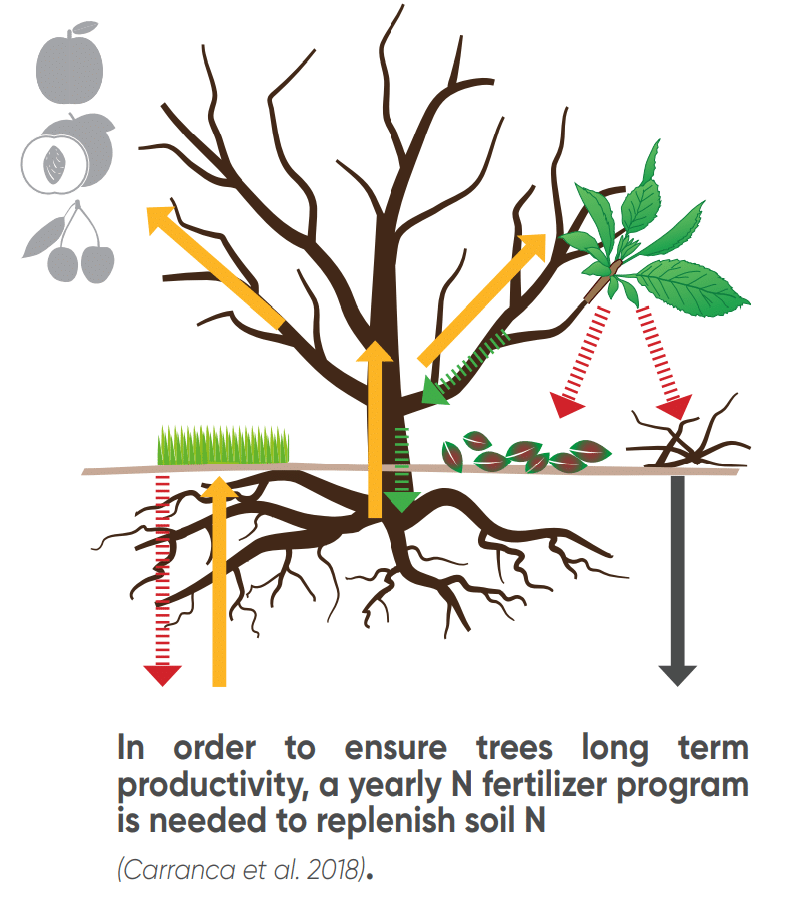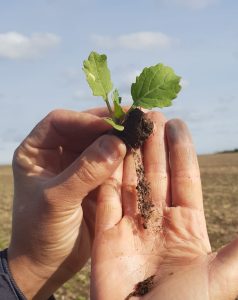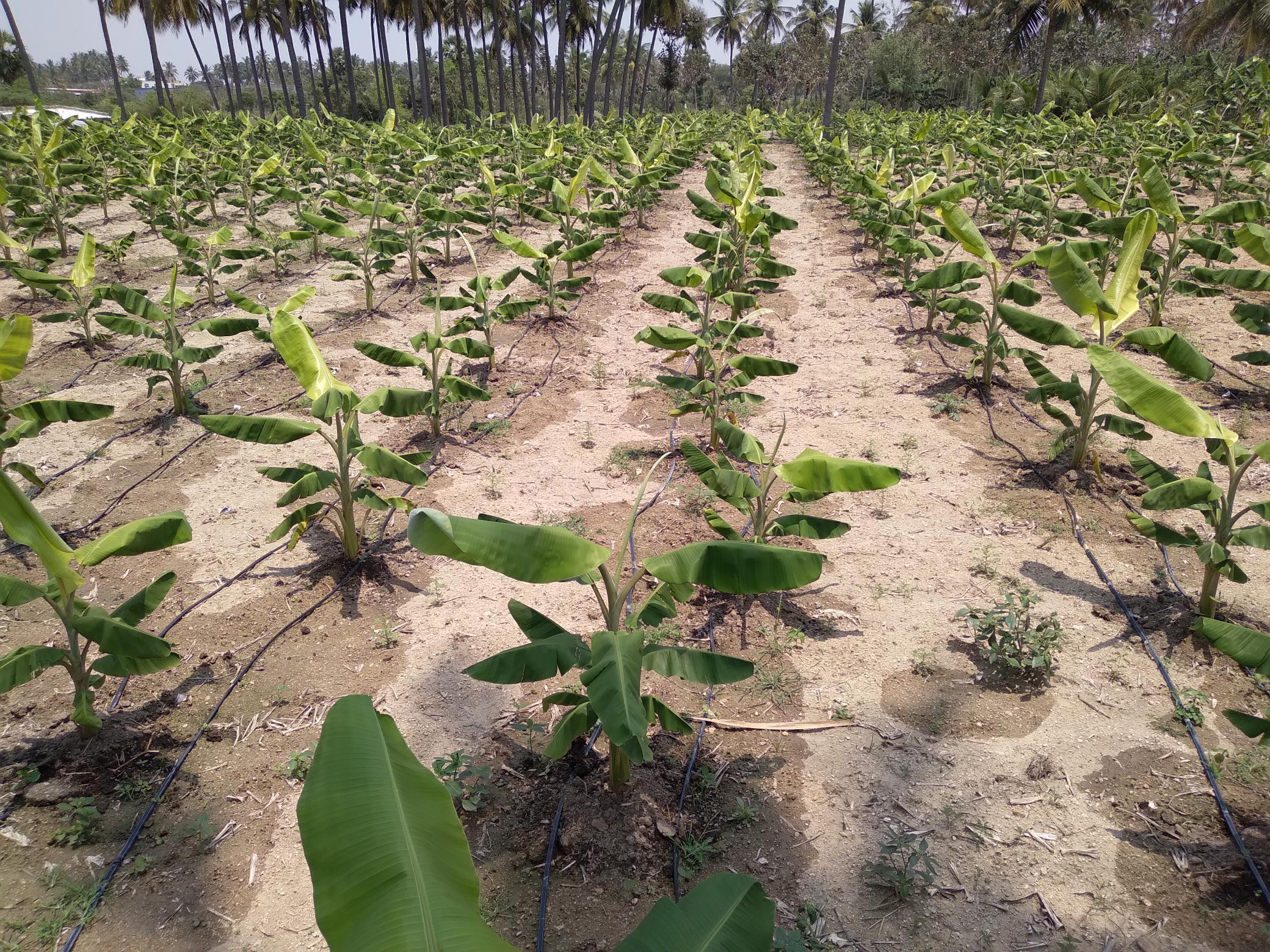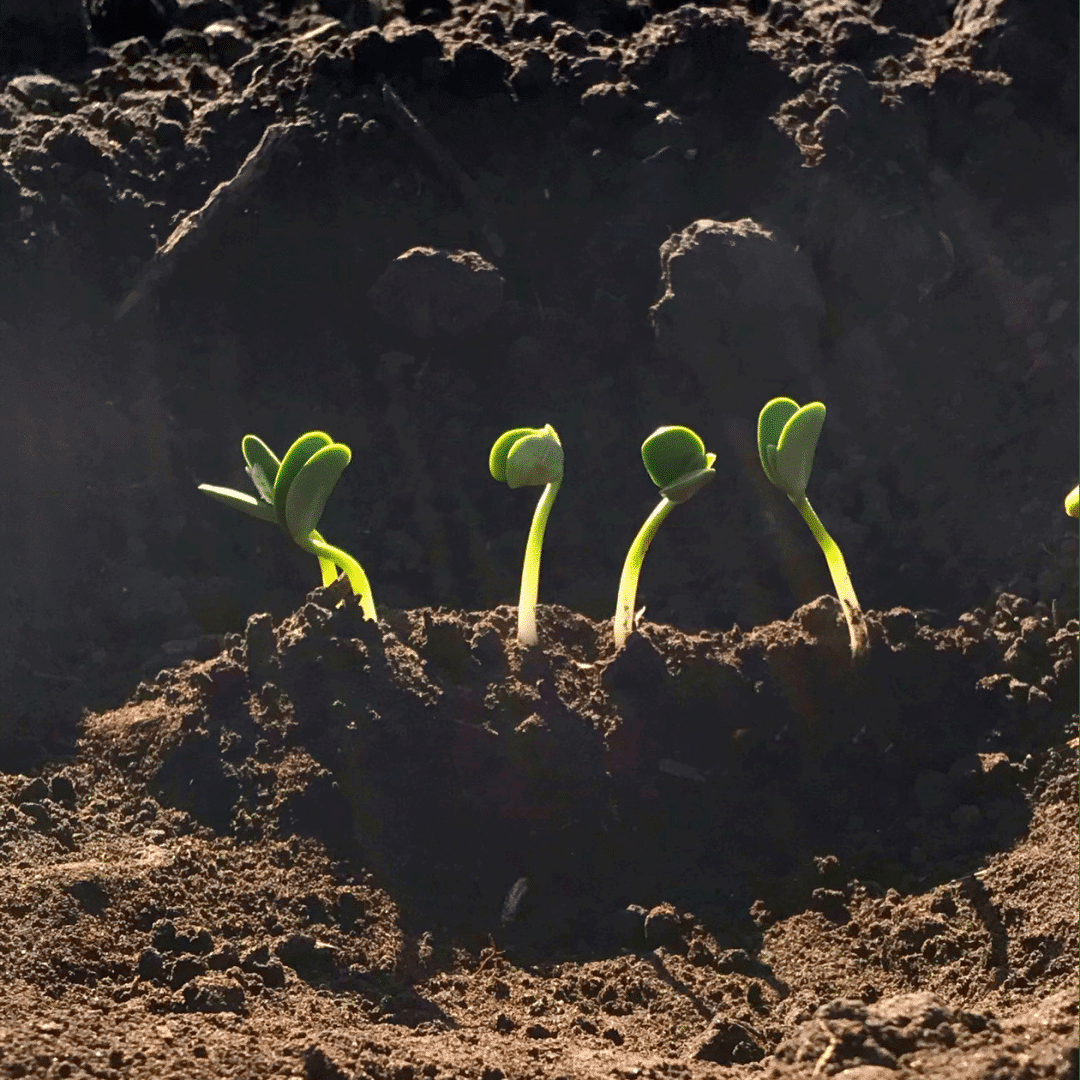Understanding Nitrogen Dynamics in Fruit Trees for a Successful Spring
Perennial fruit crops do not benefit from crop rotation and therefore from soil regeration. Moreover, alternate bearing is a well-known phenomenon in fruit trees that is characterized by a biennial pattern (great yield in year N and lower yield in year N+1). It is the farmer’s aim to manage soil fertility and provide high quality fertilizers to avoid draining a tree’s resources during the spring to ensure healthy vegetative regrowth.
Spring Growth and Winter Challenges
A stellar spring start can be impacted by the severity of the winter the tree faced (mild, rainy, etc.) and by the previous year’s yield. In fact, fruit trees can remobilize storage reserves in their perennial organs to face winter and thus be weakened to support early growth. Fruit trees have great needs in the spring in order to ensure root growth and healthy leaves and flowers. The main two sources of N at this stage are root uptake and internal N cycling. N supply can fortify and sustain growth in the spring.
The Importance of Nitrogen in Fruit Trees
Nitrogen is the most important nutrient in fruit trees, as it is a component of several organic compounds (amino acids, proteins, nucleic acids) and chlorophyll. Nitrogen requirements vary among young orchards and mature orchards:
– Young trees need N for rapid growth to reach mature tree size
– Mature orchards need N regarding fruit and leaf development.
Nitrogen Dynamics in the Ecosystem
Nitrogen dynamics in trees must be considered at the level of the ecosystem. Trees can face competition with grass covering or N losses by leaching and volatilization. The regulation of N uptake varies according to the organ needs. When shoots have high demand of N, roots N uptake increases, on the contrary low shoot demand for N leads to internal N cycling.
.
- N dynamics in a fruit tree ecosystem (Tagliviani et al. 2016)
- Absorption of N from soil and its allocation (fruits, shoots, leaves)
- N removals from the system including losses by leaching and volatilization
- Cycling of N in the ecosystem (pruning material or dead material)
- Tree internal cycling of N for storage in perennial organs (roots, trunk)
TIMAC AGRO has a specific technology with an organo-mineral matrix structure encapsulating urea and ammonium. This encapsulation allows both quick N release (ammonium) and gradual release (urea must be hydrolyzed into NH4+ to pass through the matrix and to be nitrified in nitrates). This technology provides immediate and long-term N to the tree and limits losses into the environment (less volatilization and lixiviation).
Contact your local TIMAC AGRO to learn how you can set your trees up for a successful spring!




